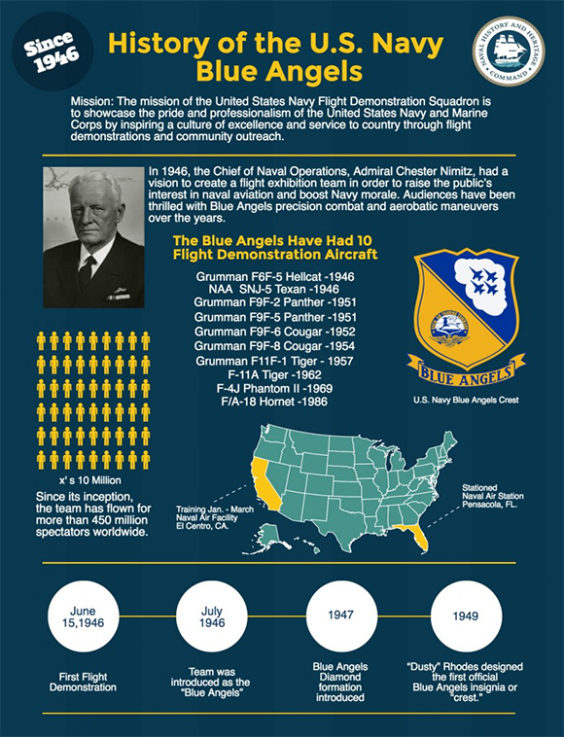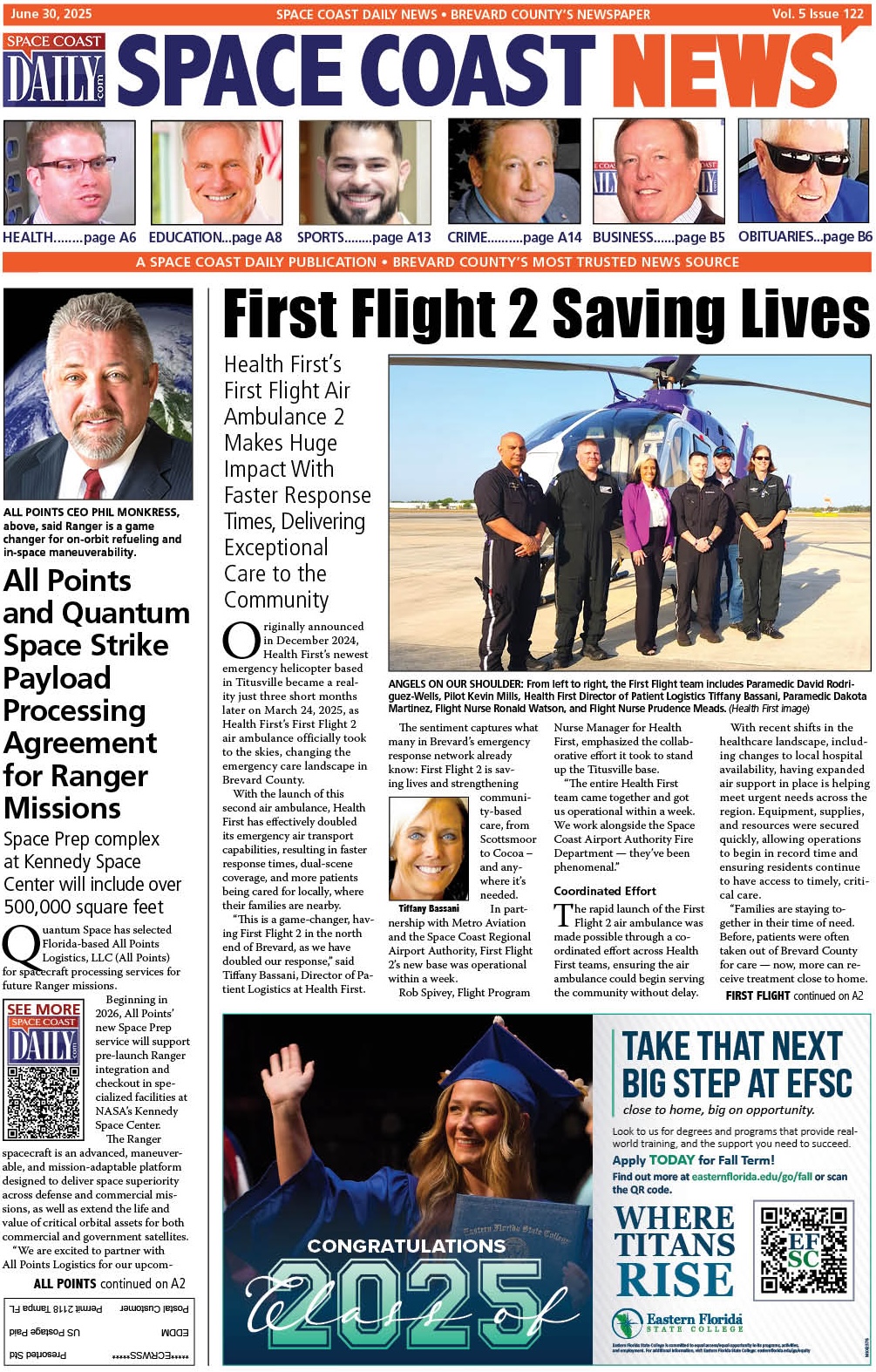VIDEO: How Well Do You Know the U.S. Navy Flight Demonstration Squadron’s Blue Angels?
By Space Coast Daily // April 26, 2016
Blue Angels to celebrate 70th Birthday
ABOVE VIDEO: On April 24, 1946, Chief of Naval Operations Adm. Chester W. Nimitz ordered the formation of a flight demonstration team to keep the public interested in naval aviation.
It’s true, the U.S. Navy Flight Demonstration Squadron, the Blue Angels, are pretty famous (they have performed for more than 450 million people) but how well do you know their history?
Like most things Navy, the Blues, as they are affectionately called, are rooted in a proud and lasting heritage.
As we celebrate their 70th birthday, take a look back on how they became the fixture in the sky we all know today.
Q: Who established the Blue Angels?
A: The Chief of Naval Operations, Admiral Chester W. Nimitz, ordered the establishment of the team on April 24, 1946. Admiral Nimitz had the vision to create a flight exhibition team in order to raise the public’s interest in naval aviation and boost Navy morale.

Q: When did they perform their first flight?
A: The Navy Flight Exhibition Team, their formal title at the time, performed its first flight demonstration June 15, 1946, at their home base, Naval Air Station (NAS) Jacksonville, Florida. Lt. Cmdr. Roy “Butch” Voris led the team and flew the Grumman F6F-5 Hellcat. The new Navy Flight Exhibition team was only the second formal flying demonstration team to have been created in the world, since the Patrouille de France formed in 1931.
Q: Why is the flight exhibition team called the ‘Blue Angels’?
A: The team was first introduced as the “Blue Angels” at a show in Omaha, Nebraska, in July 1946. Right Wing Pilot Lt. Maurice “Wick” Wickendoll came across the name in the New Yorker Magazine in a column called Goings On About Town. Voris said, “That sounds great! The Blue Angels. Navy, Blue, and Flying!”

Q: When did the Blue Angels get the crest that is displayed on their planes and flight suits?
A: In 1949, Flight Leader Lt. Cmdr. Raleigh “Dusty” Rhodes designed the first official Blue Angels insignia or “crest.” It is nearly identical to the current design. Only the aircraft silhouettes in the cloud have changed with each aircraft the team has flown.
Q: How many aircraft have the Blue Angels flown?
A: Since their creation, they have flown 10 flight demonstration aircraft. The first was the F6F Hellcat.
Q: Are the Blue Angels all U.S. Navy pilots?
A: No, the Blue Angels’ first Marine Corps pilot, Capt. Chuck Hiett, joined the team in 1954. At least one position has been reserved for a Marine ever since.
CLICK HERE FOR MORE SPACE COAST NEWS














